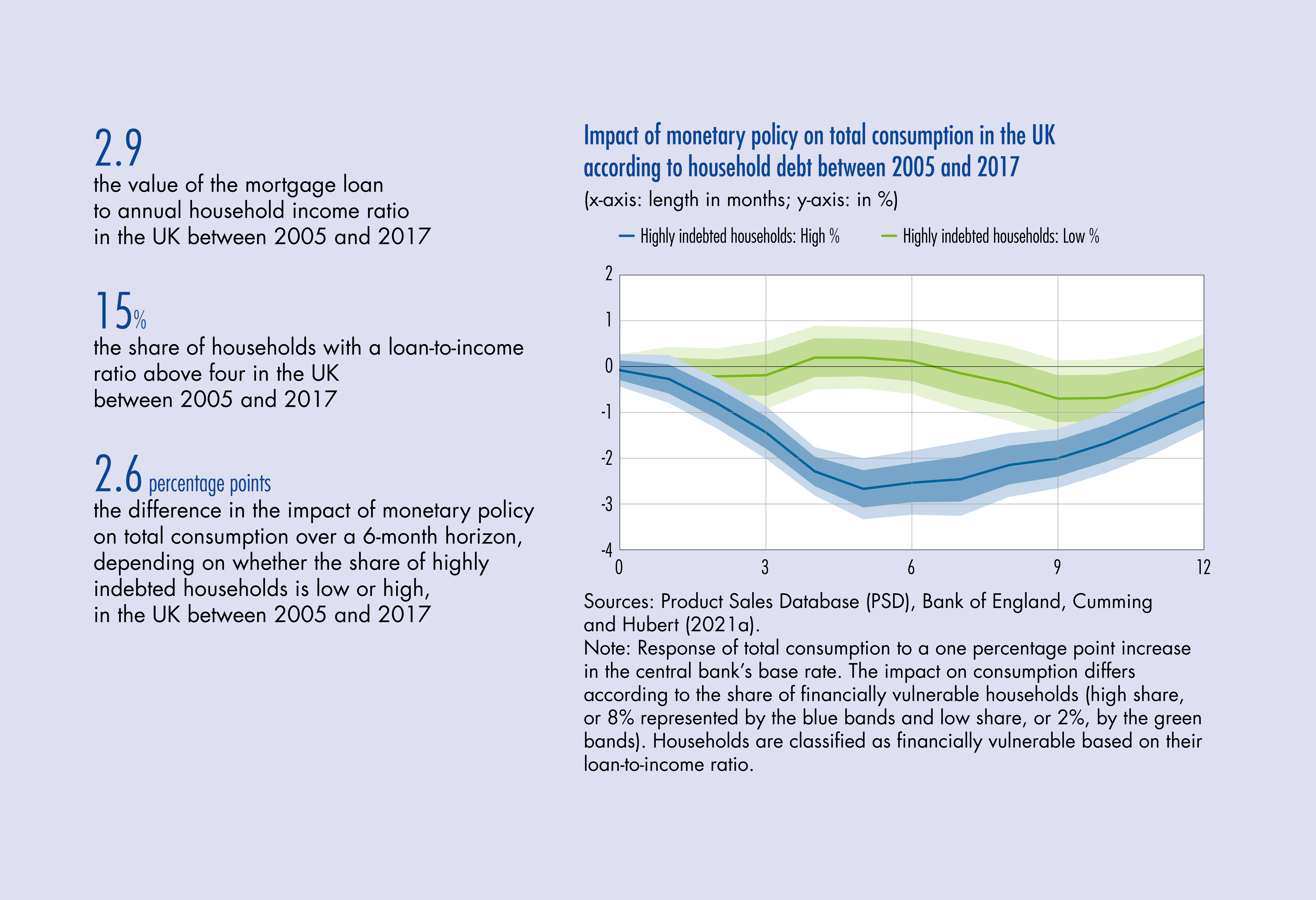
Banque de France Bulletin no. 236: Article 2 Does household mortgage debt influence the transmission of monetary policy in the United Kingdom?
Does monetary policy transmission in the United Kingdom depend on household mortgage debt? This article shows that changes in Bank of England base rates have a greater impact on consumption when a larger proportion of households are financially constrained and close to their borrowing limits. Moreover, the impact of monetary policy depends partly on the past house price developments and thus on households’ refinancing capacity. However, the effect of debt levels on monetary policy in the UK is not symmetrical: an increase in interest rates is more effective than a decrease because it pushes households towards their financial constraints. It therefore reduces their consumption relatively more than a decrease would increase it.
1 The heterogeneity of financial situations affects the impact of monetary policy
There is growing empirical evidence in the economic literature that households adjust their consumption differently to income shocks – that is, households differ in their marginal propensity to consume. Such heterogeneous contributions rank households according to the amount of liquid assets they hold. Liquidity‑constrained households tend to have high marginal propensities to consume and therefore consume a large share of their income. These households are termed “hand‑to‑mouth” (HtM) in the literature. They can be either “poor” (if they have no assets) or “wealthy” (if they have positive but illiquid assets, e.g. if they own their main residence, but have very limited cash and high constrained expenses, such as their monthly mortgage payment). Using this classification, Slacalek et al. (2020) show that 10% of euro area households are “HtM”, 12% are “wealthy HtM” and 78% are “not HtM”.
In response to a change in base rates (e.g. an easing of monetary policy), non‑HtM households behave according to the permanent income hypothesis: their consumption habits remain largely unchanged following a transitory increase in their incomes due to the indirect effects of monetary policy (increase in economic activity and thus in incomes). However, their consumption can be stimulated by the intertemporal substitution channel and the role of interest rates on the trade‑off between consumption and savings. Conversely, faced with the same expansionary monetary policy, the consumption of HtM households is mostly stimulated through indirect effects (see Box).
The impact of the indirect effects is heavily skewed towards these households, as they have lower incomes on average and benefit more than proportionally from the new jobs created and wage increases. The effect of this channel on consumption is amplified by their higher marginal propensities to consume than other households. In short, the intertemporal substitution channel plays a major role for non‑HtM households that hold large amounts of savings. Other transmission channels (e.g. operating through the changes in house prices or aggregate economic growth) play a more important role for HtM households that do not have savings (i.e. liquid assets) to smooth their consumption in response to economic shocks.
Household heterogeneity can therefore play a key role in the transmission of monetary policy. It is important to take account of differences between households – in terms of marginal propensity to consume, wealth, income and the sensitivity of this income to the economic cycle – when assessing…
Download the PDF version of this document

- Published on 09/02/2021
- 9 pages
- EN
- PDF (476.63 KB)
Bulletin Banque de France 236
Updated on: 09/02/2021 10:41
